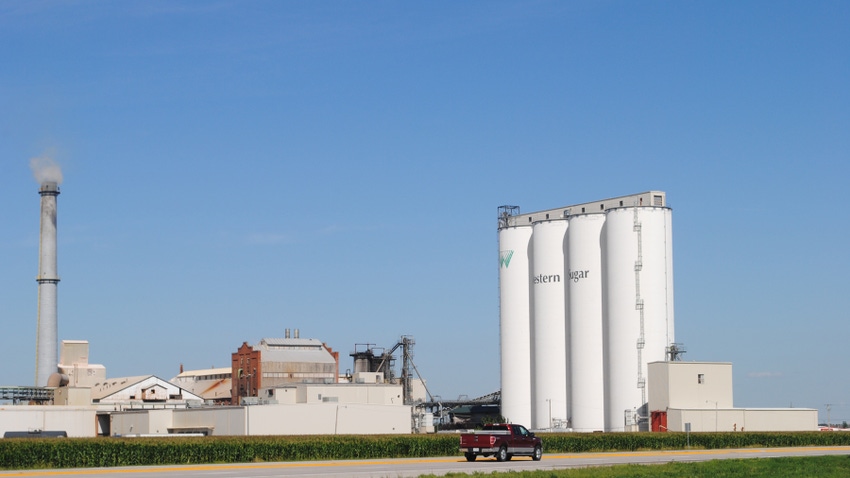October 12, 2023

by Michael Ann Relka
I am a Nebraska LEAD Class 33 alum and an agriculturalist with the Western Sugar Cooperative. I also farm with my husband around Scottsbluff, Neb., where we grow sugarbeets, dry edible beans and corn.
Sugarbeets are a crop with deep history in the Nebraska Panhandle. The Scottsbluff factory was built in 1910 and is one of four factories operated by the Western Sugar Cooperative across four states — including Nebraska, Colorado, Wyoming and Montana.
The Scottsbluff factory has a large impact on the local community, contributing more than 300 jobs to the area. In 2002, the local growers purchased the Western Sugar Co., creating a grower-owned cooperative. The cooperative structure allows the producers to be a part of the entire process from the planting of the sugarbeets to the selling of the sugar to retailers and consumers.
Harvest season
Sugarbeets are a root crop and are harvested by removing the tops of the plant with a defoliator. A sugarbeet harvester will then pull the beets out of the ground and load them into trucks that deliver the beets to a receiving station where they are stored in long piles 20 feet high.
Sugarbeet harvest kicks off in September with an early-harvest period where growers are scheduled to deliver their crop with the factory keeping only about three days’ worth of processing on hand. This allows the factory to begin operation using fresh beets when the heat of September days doesn’t allow for long-term storage. Regular harvest begins Oct. 6.
This is the point when the crop will be harvested for long-term storage and all growers will begin delivering their sugarbeets to the receiving stations, where the beets will be kept and then hauled into the factory for processing over the next five to six months.
In ideal conditions, a majority of the crop will be harvested in about three weeks’ time. Freezing temperatures, extreme heat and wet weather can all slow the harvest process, affect the storability of the crop and add to the need for the crop to be monitored closely throughout the harvest season. Growers work diligently to deliver a storable crop before bad weather sets in.
Fruits of harvest
Once harvest begins, the factory will run 24 hours a day, seven days a week, until the entire crop has been processed. On average, the sugarbeets will be made up of about 17% sugar.
This sugar is extracted from the sugarbeets and turned into granulated sugar, brown sugar and powdered sugar. The sugar is packaged and shipped throughout the country. In the end, the sugarbeet crop provides sugar to be used in some of our favorite foods, making life just a little sweeter.
Relka is a graduate of Nebraska LEAD Class 33.
You May Also Like




